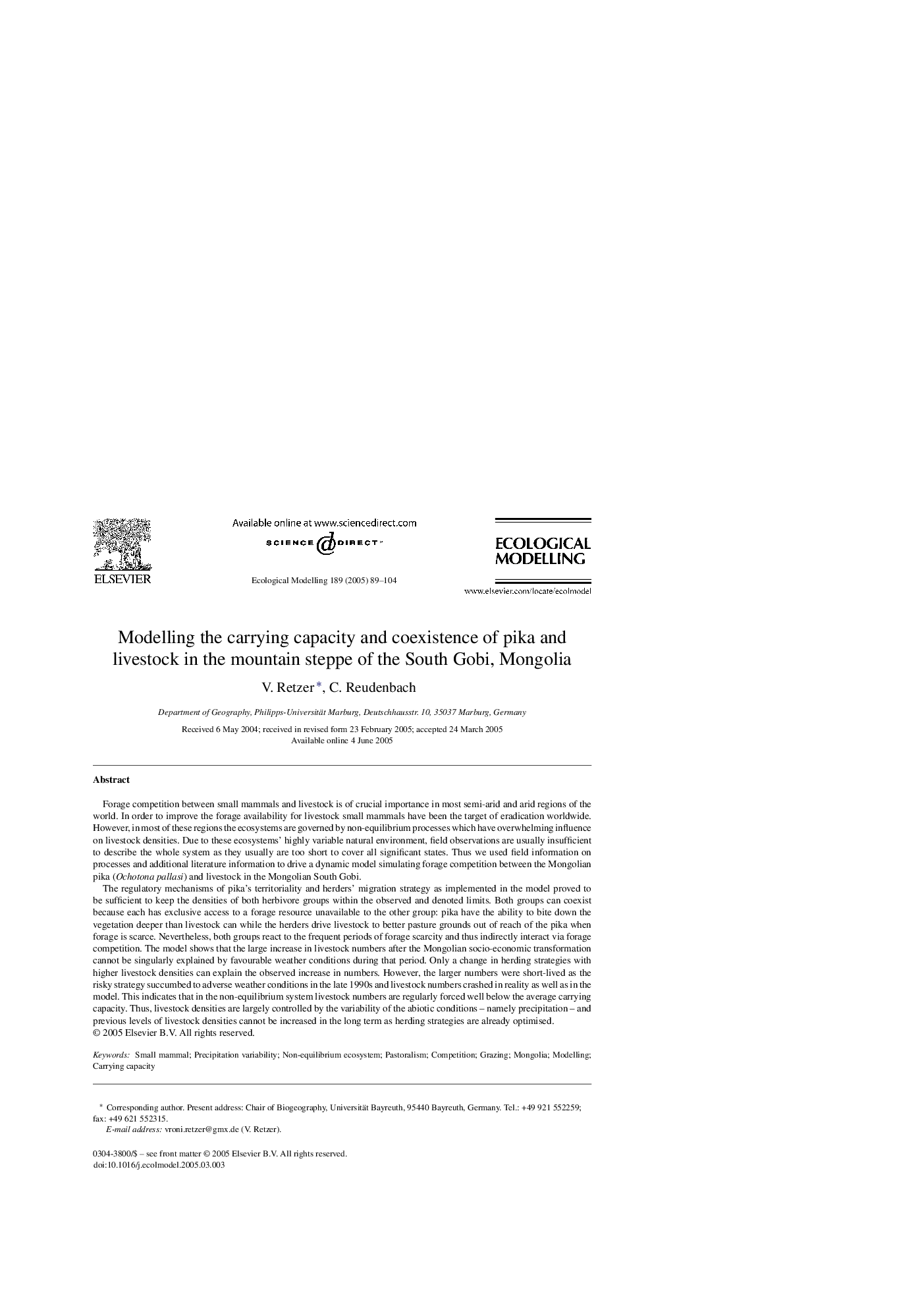| کد مقاله | کد نشریه | سال انتشار | مقاله انگلیسی | نسخه تمام متن |
|---|---|---|---|---|
| 9443475 | 1617574 | 2005 | 16 صفحه PDF | دانلود رایگان |
عنوان انگلیسی مقاله ISI
Modelling the carrying capacity and coexistence of pika and livestock in the mountain steppe of the South Gobi, Mongolia
دانلود مقاله + سفارش ترجمه
دانلود مقاله ISI انگلیسی
رایگان برای ایرانیان
کلمات کلیدی
موضوعات مرتبط
علوم زیستی و بیوفناوری
علوم کشاورزی و بیولوژیک
بوم شناسی، تکامل، رفتار و سامانه شناسی
پیش نمایش صفحه اول مقاله

چکیده انگلیسی
The regulatory mechanisms of pika's territoriality and herders' migration strategy as implemented in the model proved to be sufficient to keep the densities of both herbivore groups within the observed and denoted limits. Both groups can coexist because each has exclusive access to a forage resource unavailable to the other group: pika have the ability to bite down the vegetation deeper than livestock can while the herders drive livestock to better pasture grounds out of reach of the pika when forage is scarce. Nevertheless, both groups react to the frequent periods of forage scarcity and thus indirectly interact via forage competition. The model shows that the large increase in livestock numbers after the Mongolian socio-economic transformation cannot be singularly explained by favourable weather conditions during that period. Only a change in herding strategies with higher livestock densities can explain the observed increase in numbers. However, the larger numbers were short-lived as the risky strategy succumbed to adverse weather conditions in the late 1990s and livestock numbers crashed in reality as well as in the model. This indicates that in the non-equilibrium system livestock numbers are regularly forced well below the average carrying capacity. Thus, livestock densities are largely controlled by the variability of the abiotic conditions - namely precipitation - and previous levels of livestock densities cannot be increased in the long term as herding strategies are already optimised.
ناشر
Database: Elsevier - ScienceDirect (ساینس دایرکت)
Journal: Ecological Modelling - Volume 189, Issues 1â2, 25 November 2005, Pages 89-104
Journal: Ecological Modelling - Volume 189, Issues 1â2, 25 November 2005, Pages 89-104
نویسندگان
V. Retzer, C. Reudenbach,